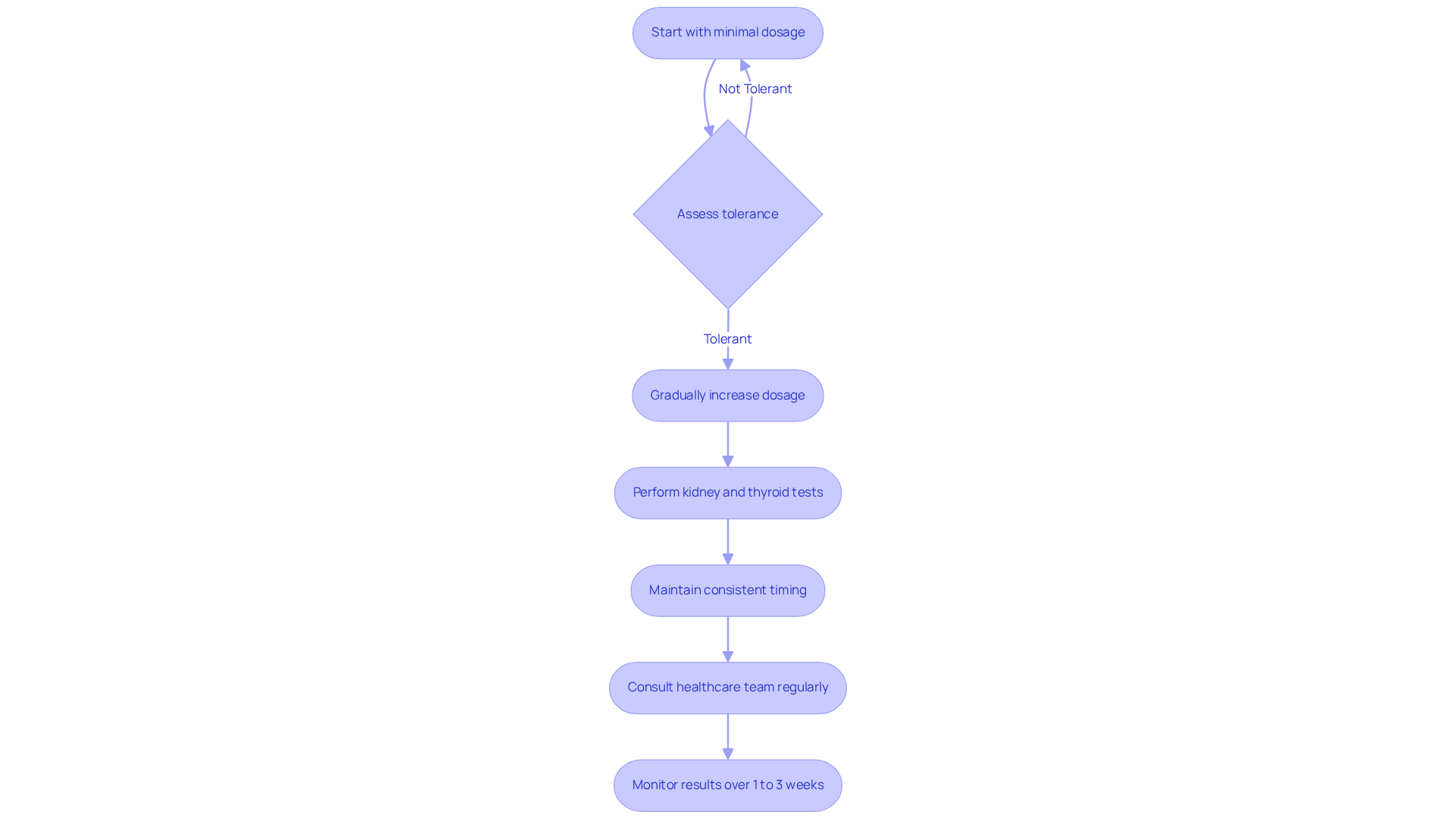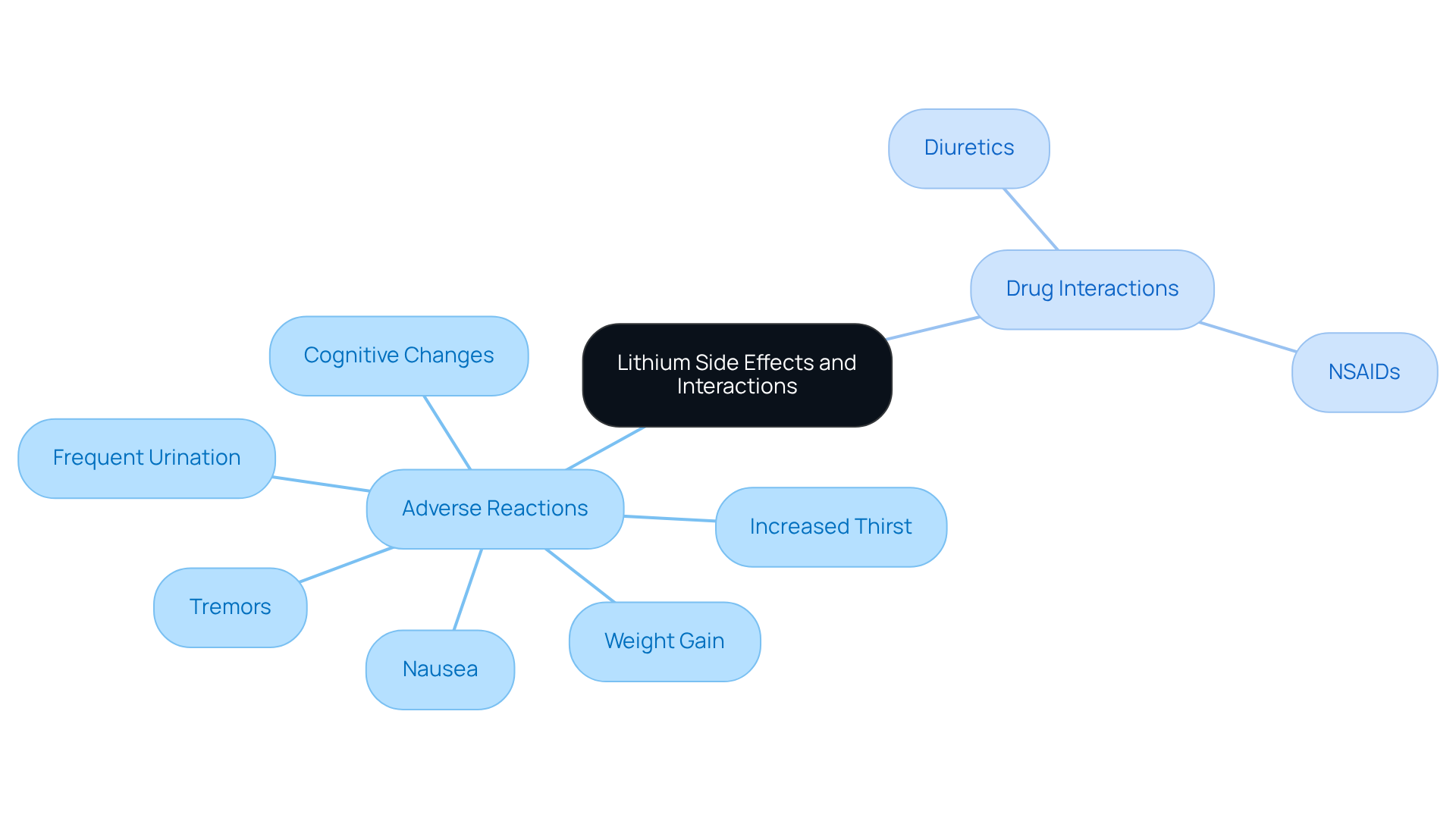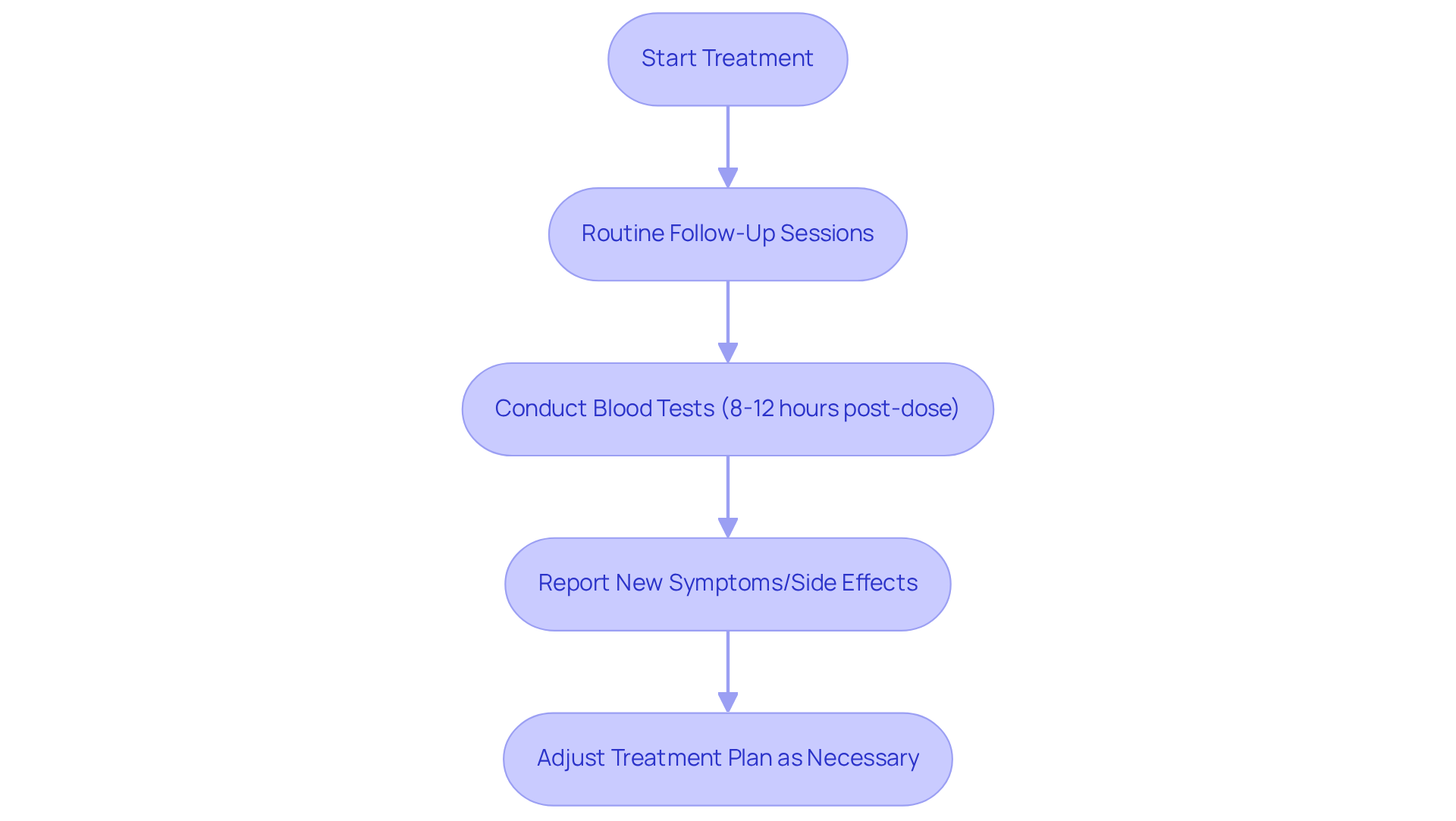Master Lithium for Anxiety: Dosage, Effects, and Monitoring
Overview
This article explores the use of lithium as a treatment for anxiety, focusing on its dosage, effects, and the crucial importance of monitoring during treatment. Lithium is known to modulate neurotransmitter activity, which can alleviate anxiety symptoms effectively.
However, careful dosage management and regular follow-ups are essential to ensure both safety and effectiveness. Evidence supports its potential benefits, alongside the necessity to be aware of possible side effects. Understanding these factors is vital for anyone considering lithium as a treatment option.
Introduction
Lithium, a mineral long recognized for its mood-stabilizing properties, is emerging as a potential ally in the battle against anxiety. Recent research unveils lithium’s capacity to modulate neurotransmitter activity, particularly in reducing norepinephrine. This discovery offers individuals grappling with anxiety a glimmer of hope in exploring this treatment option.
However, the journey to effectively harnessing lithium’s benefits is fraught with questions. Proper dosage, potential side effects, and the intricacies of monitoring its effects require careful consideration. How can one navigate these complexities to safely and effectively incorporate lithium into their anxiety management plan? Understanding these factors is crucial for those looking to explore this promising avenue.
Understand Lithium and Its Role in Anxiety Management
Lithium is a naturally occurring mineral known for its long-standing use as a mood stabilizer, particularly in treating bipolar disorder. Recent studies indicate that lithium for anxiety may also be effective in managing anxiety symptoms.
How does it work? Lithium for anxiety modulates neurotransmitter activity in the brain, particularly by reducing norepinephrine levels, which can help alleviate anxiety. Understanding how lithium interacts with the brain’s chemistry is crucial for anyone considering it as a therapeutic option.
Research suggests that low-dose lithium for anxiety could offer advantages with fewer side effects, making it a promising choice for individuals dealing with anxiety. If you’re exploring treatment options, consider the potential benefits of lithium. By comprehending its effects, you can make informed decisions about your mental health management.

Determine Appropriate Dosage and Administration Methods
Starting a medication involving lithium necessitates a careful strategy, beginning with a minimal dosage to assess tolerance. The recommended starting dosage is typically 300 mg taken once daily, which can be gradually increased based on individual response and under medical supervision. Dosages generally range from 600 mg to 1,800 mg per day, divided into two or three doses.
It is important to take lithium consistently at the same times each day to maintain stable blood levels. Before starting treatment, healthcare providers should perform kidney and thyroid function tests, particularly for patients aged 50 or older, to ensure safety. Lithium generally requires 1 to 3 weeks to demonstrate results, so patience is crucial.
Sustaining proper salt and fluid consumption while on lithium is essential to avoid negative outcomes. Regular consultations with an interprofessional healthcare team are vital to determine the most suitable dosage and administration method tailored to your specific needs.

Recognize Potential Side Effects and Drug Interactions
Lithium can lead to a variety of adverse reactions, including:
- nausea
- tremors
- increased thirst
- frequent urination
While many side effects may diminish over time, some—such as weight gain and cognitive changes—can persist. It is crucial to observe for indications of toxicity from this medication, which can encompass:
- severe nausea
- diarrhea
- confusion
Furthermore, this element interacts with different drugs, including diuretics and NSAIDs, which can elevate its concentration in the body and raise the risk of toxicity. Always inform your healthcare provider about all medications you are taking to avoid dangerous interactions.

Monitor Effects and Adjust Treatment as Necessary
After starting the treatment, routine follow-up sessions are essential to observe its impacts and modify the dosage as required. These sessions play a critical role in ensuring the effectiveness of the therapy. Blood tests should be conducted to check levels of lithium for anxiety, typically 8 to 12 hours after the last dose. This timing is crucial to ensure that levels remain within the therapeutic range.
Patients should also be vigilant about reporting any new symptoms or side effects to their healthcare provider. This proactive communication is vital for timely adjustments to the treatment plan. As a result, the therapy can remain both effective and safe, tailored to the individual needs of each patient.

Conclusion
Lithium emerges as a significant option for managing anxiety, showcasing its potential as a mood stabilizer beyond its traditional use in treating bipolar disorder. By modulating neurotransmitter activity, particularly through the reduction of norepinephrine levels, lithium can effectively alleviate anxiety symptoms. This understanding empowers individuals to consider lithium as a viable therapeutic choice, provided they are informed about its effects and usage.
Key aspects of lithium treatment include:
- Careful dosage determination
- Consistent administration
- Regular monitoring of side effects and drug interactions
Starting with a low dose and adjusting based on individual responses ensures safety and effectiveness. Furthermore, maintaining open communication with healthcare providers is crucial for timely adjustments and monitoring to keep treatment within the therapeutic range.
Ultimately, the journey of managing anxiety with lithium requires patience, diligence, and collaboration with healthcare professionals. By recognizing the potential benefits and risks associated with lithium therapy, individuals can take proactive steps towards their mental health, paving the way for a more stable and fulfilling life. Embracing this knowledge can lead to informed decisions that significantly impact anxiety management and overall well-being.
Frequently Asked Questions
What is lithium and how is it used in anxiety management?
Lithium is a naturally occurring mineral primarily known for its use as a mood stabilizer in treating bipolar disorder. Recent studies suggest that lithium may also be effective in managing anxiety symptoms.
How does lithium work to alleviate anxiety?
Lithium modulates neurotransmitter activity in the brain, particularly by reducing norepinephrine levels, which can help alleviate anxiety.
What are the potential benefits of using low-dose lithium for anxiety?
Research indicates that low-dose lithium for anxiety could provide advantages with fewer side effects, making it a promising treatment option for individuals dealing with anxiety.
Why is it important to understand lithium’s effects on brain chemistry?
Understanding how lithium interacts with the brain’s chemistry is crucial for anyone considering it as a therapeutic option, as it helps in making informed decisions about mental health management.






